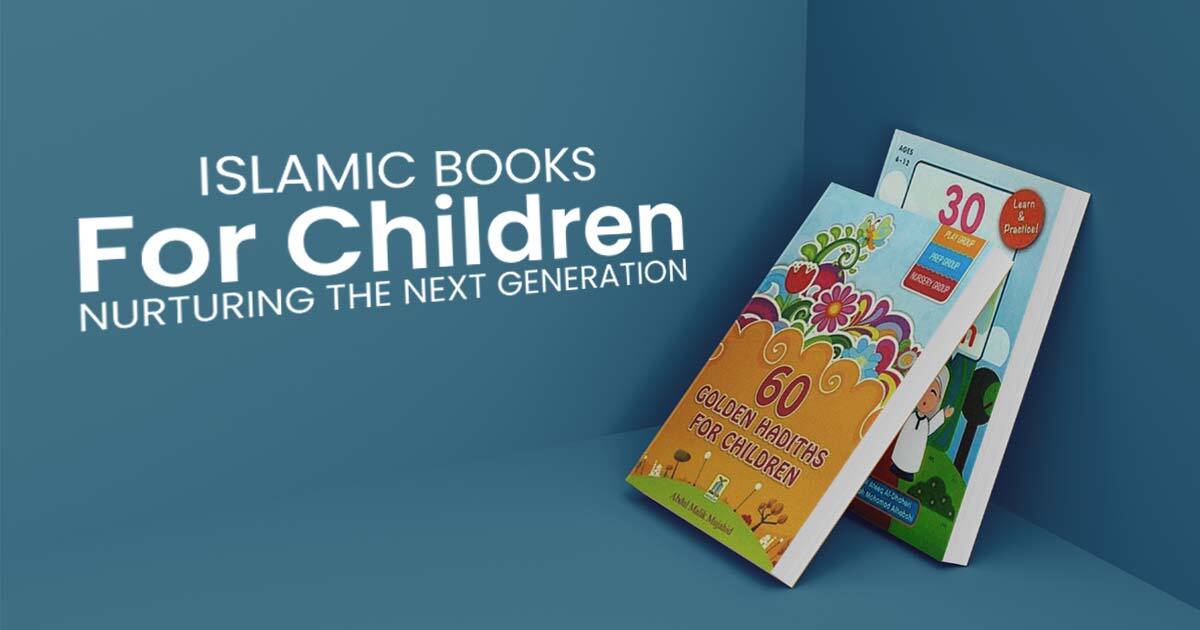In today’s rapidly changing world, where information streams in from all corners, equipping our children with a strong foundation in their faith is more crucial than ever. Islamic children’s books offer a beautiful way to introduce young minds to the rich tapestry of Islam, fostering a love for their religion from a tender age. This comprehensive guide serves as a resource for parents and educators seeking to nurture the next generation of Muslims through engaging and informative Islamic children’s literature.
The Power of Islamic Books for Children:
There are countless compelling reasons to incorporate Islamic books into your child’s life:
- Laying a Strong Foundation of Faith: Early exposure to Islamic teachings helps children develop a basic understanding of core concepts like Tawhid (oneness of God), the pillars of Islam, and the stories of the Prophets (peace be upon them). These foundational elements become the building blocks for a strong Islamic identity.
- Instilling Islamic Values: Through relatable stories and captivating characters, children learn valuable moral lessons like kindness, compassion, honesty, and respect for others. These values become ingrained in their character and guide them throughout their lives.
- Sparking a Love for Islam: Beautifully illustrated books capture children’s imaginations and make learning about Islam a fun and enjoyable experience. They become excited to discover more about their faith and its rich traditions.
- Connecting with Islamic Culture: Children’s books introduce them to Islamic traditions, celebrations like Eid, and historical figures. This fosters a sense of cultural identity and belonging within the global Muslim community.
- Cultivating a Lifelong Love of Learning: Early exposure to Islamic books sparks curiosity about Islam and encourages children to continue their learning journey throughout their lives. They develop a thirst for knowledge and a desire to deepen their understanding of their faith.
Selecting the Perfect Islamic Books:
With a vast array of Islamic children’s books available, choosing the right ones for your child can feel overwhelming. Here are some key factors to consider:
- Age Appropriateness: Match the book’s difficulty level to your child’s developmental stage. Younger children benefit from simple stories with vibrant pictures, while older children can handle more complex topics and longer texts.
- Content Focus: Consider the specific Islamic concepts you want your child to learn. Do you want a book focusing on basic tenets of faith, stories of Prophets, Islamic manners (adab), or Islamic holidays?
- Language: Choose books in your child’s native language or one they are comfortable reading. Bilingual options can strengthen vocabulary and cultural understanding.
- Visual Appeal: Attractive illustrations and engaging layouts grab children’s attention and make reading enjoyable. Look for books with bright colors, appealing characters, and age-appropriate illustrations.
- Author’s Credibility: Select books written by reputable authors or publishers known for their Islamic scholarship and accuracy.
- Reviews and Recommendations: Read online reviews from other parents and educators. Consider recommendations from Islamic schools, libraries, or local Muslim bookstores.
Enhancing Your Child’s Learning Journey:
Beyond simply reading the books, here are some engaging strategies to ensure your child gets the most out of Islamic children’s literature:
- Interactive Reading Sessions: When your children are young, read the books aloud with them. Discuss the pictures, explain concepts in a way that resonates with their age, and answer their questions openly.
- Creating a Reading Routine: Make reading Islamic books a regular part of your child’s day or week. Integrate it into your bedtime routine, after-school activities, or weekend family time.
- Engaging Activities: After reading, have discussions about the stories, ask thought-provoking questions, and encourage children to draw pictures, do role-playing activities related to the story, or complete coloring pages featuring Islamic themes.
- Leading by Example: Demonstrate your own interest in Islam by reading Islamic books yourself and discussing your faith journey with your children. This sets a positive example and encourages them to embrace their own learning journey.
- Building a Home Library: Invest in a collection of diverse and age-appropriate Islamic children’s books. Make them readily available on shelves or in a cozy reading nook to encourage independent exploration.
A World of Wonder: Exploring Islamic Children’s Books by Theme
Here’s a glimpse into the captivating world of Islamic children’s literature, categorized by theme:
Basic Tenets of Faith:
These books introduce young children to fundamental Islamic concepts like Tawhid, the pillars of Islam, and the importance of prayer (Salah).
Examples:
- “My First Book of Monotheism” by Umm Muhammad Ibrahim
- “Who is Allah?” by Sanaa Darwazah
Stories of the Prophets (peace be upon them):
These books transport children to a bygone era, allowing them to learn valuable lessons from the lives and struggles of the Prophets (peace be upon them).
Examples:
- “Prophet Muhammad: Peace Be Upon Him” by Saadiah Pal
- “Stories of the Prophets for Young Readers” by Irfanuddin Sulimani
- “Yusuf: A Story of Patience” by Leila Bryant
Islamic Manners (Adab):
These books instill good character and Islamic etiquette in young minds, teaching them about kindness, respect, honesty, and helpfulness towards others.
Examples:
- “The Good Muslim Boy” by Umm Abdurrahman
- “The Good Muslim Girl” by Umm Abdurrahman
- “My Manners with Others” by Azra Khan
Islamic Holidays:
These books introduce young children to the significance of Islamic holidays like Eid al-Fitr, Eid al-Adha, and Ramadan, fostering a sense of community and celebration.
Examples:
- “The Islamic Calendar for Kids” by Aisha Beecher
- “Celebrating Eid” by Salma Ahmad
- “Ramadan Around the World” by Nura Wright
Islamic Art and Culture:
These books introduce children to the rich tapestry of Islamic art, architecture, and traditions, fostering a sense of cultural pride and appreciation for Islamic heritage.
Examples:
- “The Alhambra: A Journey Back in Time” by Julia Donaldson
- “Beautiful Mosques: A Look at Islamic Architecture” by Narmeen Janice
- “Islamic Patterns: Discover, Design, and Color” by Christiane Serraros
Conclusion:
Incorporating Islamic books into your child’s life is a valuable way to nurture their faith and build a strong foundation for their future. By choosing age-appropriate books, engaging in interactive reading sessions, and creating a positive learning environment, you can help your child develop a love for Islam and its teachings. Remember, the journey of learning about Islam is a lifelong one. Let these books be a stepping stone for your child’s exploration of their faith.
FAQs About Islamic Books for Children:
What if I don’t have a strong background in Islam myself?
There are many resources available to help you learn alongside your child. Consider online resources, Islamic lectures, or classes at your local mosque.
Are there any Islamic apps or websites with children’s content?
Yes, there are a growing number of educational Islamic apps and websites specifically designed for children. Explore these resources to supplement your child’s learning journey.
How can I encourage my child to memorize Quran verses?
Make memorization fun and engaging by using techniques like repetition with games or songs. Celebrate their achievements and reward their efforts.
What are some good Islamic homeschooling resources?
There are many Islamic homeschooling curriculums and resources available. Research and choose one that aligns with your child’s age and learning style.
Where can I find more recommendations for Islamic children’s books?
Ask librarians at your local library or bookstore for recommendations. Online communities and Islamic parenting forums can also be a great source of suggestions.



